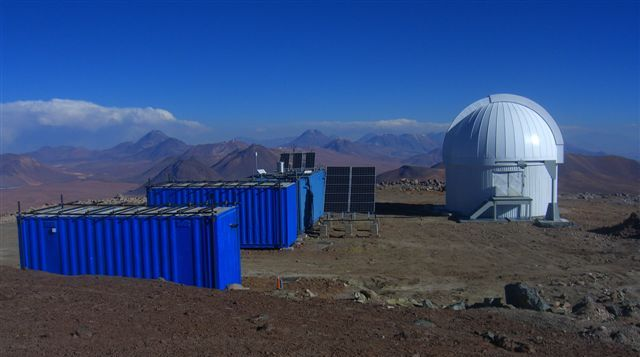Tokyo Atacama Observatory | 21 May 2024
Why in News?
The University of Tokyo Atacama Observatory (TAO) has recently been inaugurated. It is now the highest astronomical observatory (altitude of 18,500 feet) in the world, even surpassing the famous Atacama Large Millimeter Array (ALMA), which stands at 16,570 feet.
What is the Tokyo Atacama Observatory?
- About: The TAO telescope, measuring 6.5 metres in optical-infrared capacity, is perched at an altitude of 18,500 feet on Mount Chajnantor in Chile's Atacama Desert.
- Co. Chajnantor is located in the Andes Mountains near the Atacama Desert.
- The Atacama Desert is one of the best locations on Earth for astronomical observations due to its high altitude, low humidity, and clear skies, which provide excellent conditions for studying the cosmos.
- The area's elevated altitude, sparse atmosphere, and consistently dry weather make it perfect for observing nearly the full spectrum of near-infrared wavelengths.
- Infrared radiation has a wavelength longer than visible light but shorter than microwaves.
- Instruments: TAO’s 6.5-meter telescope is equipped with 2 science instruments designed for infrared observations.
- SWIMS (Simultaneous-colour Wide-field Infrared Multi-object Spectrograph): Aimed at understanding the evolution of galaxies.
- MIMIZUKU (Mid-Infrared Multi-field Imager for gaZing at the UnKnown Universe): Used to study planet formation and the origin of materials.
What are Some Other Major Observatories in India and Around the World?
- India:
- Giant Metrewave Radio Telescope, Pune (Maharashtra)
- Kodaikanal Solar Observatory, Kodaikanal (Tamil Nadu)
- Indian Astronomical Observatory (IAO), Hanle (Ladakh)
- Other International Observatories:
- Mauna Kea Observatories (Hawaii, USA)
- Kitt Peak National Observatory (Arizona, USA)
- Mount Wilson Observatory (California, USA)
- Square Kilometre Array Observatory
Note: The Square Kilometre Array Observatory (SKAO) is an international organisation in charge of building the world's largest radio telescope.
- It will be a next-generation radio astronomy facility designed to study the Universe's evolution and answer profound questions about dark matter, dark energy, and the formation of galaxies.
- It will be composed of two large telescope arrays deployed in South Africa and Australia.
- Countries like the UK, Australia, South Africa, Canada, China, France, India, Italy, and Germany are involved in its development.
- India has played a crucial role in developing the Telescope Manager software, which controls the telescope's operations.
UPSC Civil Services Examination, Previous Year Question (PYQ)
Q. Consider the following (2008):
Assertion (A): Radio waves bend in a magnetic field.
Reason (R): Radio waves are electromagnetic in nature.
Which of the following is correct?
(a) Both A and R are individually true, and R is the correct explanation of A
(b) Both A and R are individually true, but R is not the correct explanation of A
(c) A is true but R is false
(d) A is false but R is true
Ans: (a)
Q. A layer in the Earth’s atmosphere called Ionosphere facilitates radio communication. Why? (2011)
- The presence of ozone cause the reflection of radio waves to Earth.
- Radio waves have a very long wavelength.
Which of the statements given above is/are correct?
(a) 1 only
(b) 2 only
(c) Both 1 and 2
(d) Neither 1 nor 2
Ans: (d)


